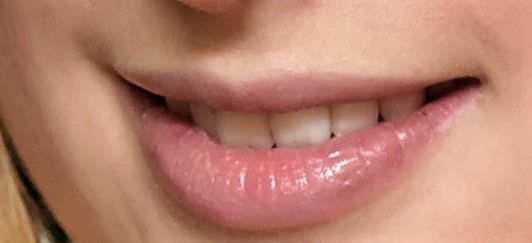prophylaxis
Care for your gums and teeth
prophylaxis
We are convinced that with targeted prevention, many diseases can be detected early and cured or even avoided altogether.
prophylactic treatment
In a separate prophylaxis room, our specially trained prophylaxis specialists will take care of your oral health.
Important components of prophylactic treatment are:
· Determination of caries and periodontitis risk · Diagnosis of the periodontal ligament by measuring the pocket depth
We have a system: This is your well-being.
- Determination of the gum condition
- Determination of plaque quantity and tooth quality
- mouthwash to reduce germs
- Understandable information on the status of oral health and the next steps
- hygiene and care tips for home
pregnancy

In maternal counseling as part of general health care, it is recommended that pregnant patients exercise caution in certain areas.
The preventive and therapeutic strategies must be individually tailored to the physical and psychological condition of the pregnant patient.
In addition, diagnostic X-rays should be avoided, especially in the first trimester.
In the last trimester of pregnancy, the patient should be positioned laterally during examinations to avoid constriction of the inferior vena cava (Rieken & Terezhalmy 2006).
Ideally, two dental examinations during pregnancy are required. At the first appointment, which should ideally be in the first trimester of pregnancy, a comprehensive medical history, detailed explanation of the causes of caries and gingivitis, determination of caries risk, professional tooth cleaning with fluoridation and detailed explanation of the connection between the oral health of the mother and that of her child are to be carried out. Of course, a dental, PAR and mucous membrane examination with any necessary restoration of the teeth, especially open carious lesions, are also part of the examination.


The second examination should be scheduled for the last third of the pregnancy, preferably in the 8th month.
In this case, a new examination should be carried out with professional teeth cleaning. Postnatal preventive care should also be a priority (Günay et al. 2007). This is because the oral cavity is home to numerous microorganisms, some of which are useful, but which can also damage the teeth and the periodontal ligament. Tooth decay is the most common disease among children in industrialized countries. It can begin as soon as the first milk tooth appears and endangers both milk teeth and permanent teeth.
Frequent consumption of sugar and/or fermentable carbohydrates in the form of sweet drinks, given in a baby bottle, plays a crucial role in the development of caries in the milk teeth, as well as inadequate oral hygiene and fluoride use. Get your child used to drinking from a cup or mug as early as the first year of life and stop giving liquids from a bottle after the 9th month of life at the latest. If your child is constantly sucking from a bottle, the drink in it constantly washes around the milk teeth, which can lead to rapid destruction of the milk teeth (Borutta & Kneist 2006, Strippel 2004).

Even small amounts of plaque
can lead to
lead to inflammation of the gums.

To protect the gums, pregnant women should use a soft toothbrush with micro-fine bristles to brush their teeth.

The toothpaste should have special anti-plaque and anti-inflammatory properties and promote the regeneration of irritated gums.

Alcohol in mouthwash solutions
no additional antibacterial benefit.

Possible risks can be significantly reduced, health of mother and child in
general and dental medicine areas can be positively influenced.
The toothpaste:
The toothpaste should have special anti-plaque and anti-inflammatory properties and promote the regeneration of irritated gums. In scientific studies, oral hygiene products with the active ingredient combination amine fluoride/tin fluoride have proven to be particularly effective (e.g. meridol® products). Ideally, a mouthwash solution based on this active ingredient combination complements daily dental care with toothpaste and toothbrush.
The mouthwash used should be alcohol-free. Alcohol is still used in many mouthwashes, although this ingredient is not without problems, especially for pregnant women. In a study of over 8,000 women in England, Sayal et al. (2007) were able to show that even small amounts of alcohol during pregnancy led to behavioral problems in the children.
On the subject of alcohol in mouthwash solutions, a review article by Brecx, Netuschil and Hoffmann (2003) shows that ethanol is often used as a solvent, but from a chemical point of view is unnecessary in most cases. Ethanol is not antibacterially effective either in vitro or in vivo, as a study by Gjermo et al. (1970) showed. To achieve a bactericidal effect, alcohol must be used in concentrations of 40%. However, the alcohol concentration in mouthwash solutions is significantly lower at 5-27%. This means that alcohol in mouthwash solutions has no additional antibacterial benefit.
There are also relationships between alcohol and pain sensation. Bolanowski et al. (1995) found a direct relationship between alcohol content and the pain sensation triggered in the oral cavity.
There is conflicting data on the risk of cancer, so a danger cannot be completely ruled out. Alcohol should generally be avoided in mouthwash solutions because of groups at risk of alcohol consumption, such as children, adolescents, pregnant women or people with alcohol problems. This applies not only to the use of mouthwash solutions at home, but also to targeted use in the practice.
In cases of severe gingivitis, it may even be advisable for pregnant women to rinse with a chlorhexidine solution to temporarily reduce the number of germs in the oral cavity. This should of course also be alcohol-free (e.g. meridol® paro CHX 0.2%) to protect the unborn child.
If all preventive measures - dental check-ups and optimal oral hygiene at home - are followed, possible risks can be significantly reduced and the general and dental health of mother and child can be positively influenced.








